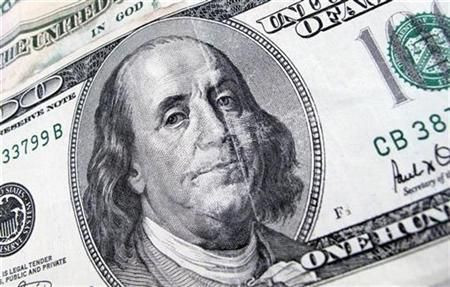Corporate America’s Massive Pile Of Idle Cash Is Shrinking

Big U.S. companies have taken plenty of criticism for hoarding mountains of cash and not doing their bit to hire or invest as they should to bolster the economy.
Apple Inc. (Nasdaq: AAPL), the greatest cash-generating company the world has ever seen, saw its cash pile grow from $98 billion in the first quarter of fiscal year 2012 to $110 billion in the second, and then to a whopping $117 billion in its latest quarterly report. The Cupertino, Calif.-based company will release its fourth-quarter results on Oct. 15.
Other companies with the most cash include Microsoft Corp. (Nasdaq: MSFT), Cisco Systems Inc. (Nasdaq: CSCO), Google Inc. (Nasdaq: GOOG), Oracle Corp. (Nasdaq: ORCL), International Business Machines Corp. (NYSE: IBM), Pfizer Inc. (NYSE: PFE), Chevron Corporation (NYSE: CVX), Exxon Mobil Corporation (NYSE: XOM) and Berkshire Hathaway Inc. (NYSE: BRK.B).
But that story is quietly changing.
Apple, the world's most valuable technology company, announced in March it would spend about $45 billion of its cash on hand on dividends and stock buybacks. Sometime in its fourth quarter, which ends Sunday, Apple will reward shareholders with a $2.65 per share annual dividend. Meanwhile, it also plans to spend approximately $10 billion to buy shares on the open market.
The huge amount of cash sitting on corporate balance sheets is shrinking, and Apple is just one example of a bigger trend.
Unused cash stored by U.S. nonfinancial businesses totaled $1.728 trillion in the second quarter, a decline of $21.5 billion from the first quarter of this year, according to the Federal Reserve’s latest Flow of Funds report.
“It is encouraging that, faced with the prospect of the U.S. economy hitting the fiscal cliff at the end of the year, businesses have not started to hoard more cash,” Paul Dales, senior U.S. economist at Capital Economics, wrote in a note to clients. “At the same time, though, there is little evidence that they have started to use their spare funds to boost investment.”
Admittedly, some upward revisions to previous data mean that businesses now hold $30 billion of cash more than previously thought. But as the value of their total assets was also revised up, businesses still held 1.3 percent of their assets in cash. That was the same as in the first quarter, suggesting that the upward trend in this area that endured during the past three years has stalled.
What’s more, businesses have started to hold fewer liquid assets. This is a wider measure of the funds that businesses can access on short notice and, as well as cash, includes funds in deposit accounts, foreign currencies and Treasuries.
In the second quarter, the value of such assets held by businesses fell by $20 billion. That meant liquid assets accounted for 5.6 percent of all assets, down from 5.7 percent in the first quarter and from its peak of 6.3 percent at the end of 2009.
“In other words, it doesn’t appear as though businesses are building up their holdings of cash and liquid assets due to fears about the economic or fiscal outlook,” Dales said. “This is particularly encouraging when there is a real risk that Congress will allow the tax hikes and spending cuts that are currently written into law to take place at the start of next year, thereby triggering another recession.”
Even though the share of assets that businesses are holding in cash is still close to a 14-year high and the share held in liquid assets is not much below 2009’s 47-year high, at a time when interest rates and rates of return are at record lows, it makes sense for businesses to hold a significant portion of their assets in cash as they would get very little interest from tying the funds up in other financial assets.
While firms may not have started to hoard more cash, they haven’t become more eager to invest, either.
In the second quarter, firms were sitting on $1.5 trillion of internal funds or undistributed profits. That’s equivalent to 9.7 percent of gross domestic product, which is well above the long-term average of 7.8 percent. But despite this, their capital expenditure amounted to $1.2 trillion, or just 7.6 percent of GDP, according to Dales.
“In other words, businesses could boost their investment by 30 percent without having to borrow a dime,” Dales said. “The upshot is that businesses still aren’t contributing as much to the economic recovery as they could be.”
© Copyright IBTimes 2024. All rights reserved.





















